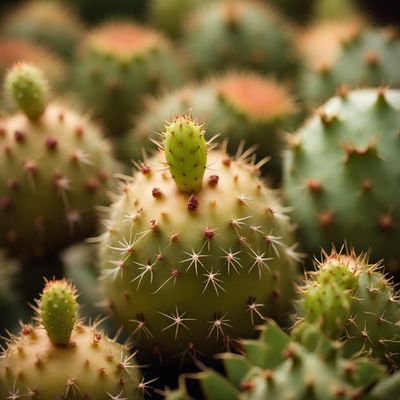
Ingredient
Prickly pears and similar-
Exotic Delights: Unveiling the World of Prickly Pears
Prickly pears are oval-shaped fruits with a thick, spiky skin that ranges in color from green to vibrant shades of red and purple. Once peeled, the flesh reveals a soft, juicy texture filled with small edible seeds. The flavor of prickly pears is often described as a cross between watermelon and kiwi, with a subtle sweetness and a hint of tartness. Their vibrant appearance and refreshing taste make them a popular choice for salads, desserts, beverages, and even salsas.
Origins and history
Prickly pears have a rich history that dates back thousands of years. Native to the Americas, they were a staple in the diets of indigenous cultures, including the Aztecs and Mayans. Prickly pears have since spread to various parts of the world, including the Mediterranean region and parts of Africa. They hold cultural significance in many countries and are often used in traditional dishes and celebrations. In addition to their culinary uses, prickly pears have also been used for medicinal purposes, with claims of benefits for digestion, hydration, and even hangovers.
Nutritional information
Prickly pears are low in calories and a good source of dietary fiber, vitamin C, and antioxidants. They also contain small amounts of calcium, magnesium, and potassium.
Allergens
Prickly pears may cause allergic reactions in some individuals, particularly those who are allergic to other fruits or have sensitivities to cactus plants. It is advisable to exercise caution and consult a healthcare professional if you have any concerns or known allergies.
How to select
When selecting prickly pears, look for fruits that are firm and free from blemishes or mold. The skin should be vibrant in color and not overly wrinkled. Avoid fruits that are too soft or have a strong odor, as these may indicate spoilage. Additionally, it is recommended to wear gloves or use tongs when handling prickly pears to avoid the spines on the skin.
Storage recommendations
To store prickly pears, keep them in a cool, dry place away from direct sunlight. If the fruits are not fully ripe, they can be stored at room temperature until they reach the desired ripeness. Once ripe, prickly pears can be refrigerated for up to one week. It is best to store them in a perforated plastic bag to maintain their freshness and prevent moisture buildup.
How to produce
Prickly pears can be grown in warm climates and are relatively easy to cultivate. They thrive in well-draining soil and require full sun exposure. It is important to handle them with care due to their spiky nature. With proper care and maintenance, prickly pear cacti can produce an abundance of fruits.
Preparation tips
To prepare prickly pears, start by wearing gloves and using tongs to handle the fruits. Carefully remove the spiky skin using a sharp knife, making sure to avoid any contact with the spines. Once peeled, the flesh can be sliced, diced, or pureed, depending on the desired recipe. Prickly pears can be enjoyed on their own, added to salads, blended into smoothies, or used as a topping for desserts. They can also be used to make refreshing beverages, such as juices, cocktails, or even sorbets.
Culinary uses
Prickly pears are commonly used in various culinary applications. They can be incorporated into salads, salsas, and sauces to add a burst of color and flavor. Prickly pear puree or juice is often used in desserts, such as ice creams, sorbets, and jellies. They can also be used to make refreshing beverages, including cocktails and mocktails. In Mexican cuisine, prickly pears are a key ingredient in traditional dishes like agua frescas and nopales (cactus) salads.
Availability
Prickly pears are commonly available in regions with warm climates, such as Mexico, the southwestern United States, parts of Europe, and North Africa.


